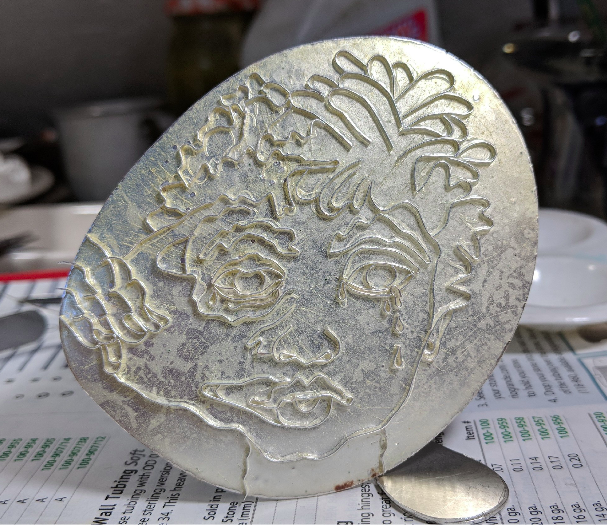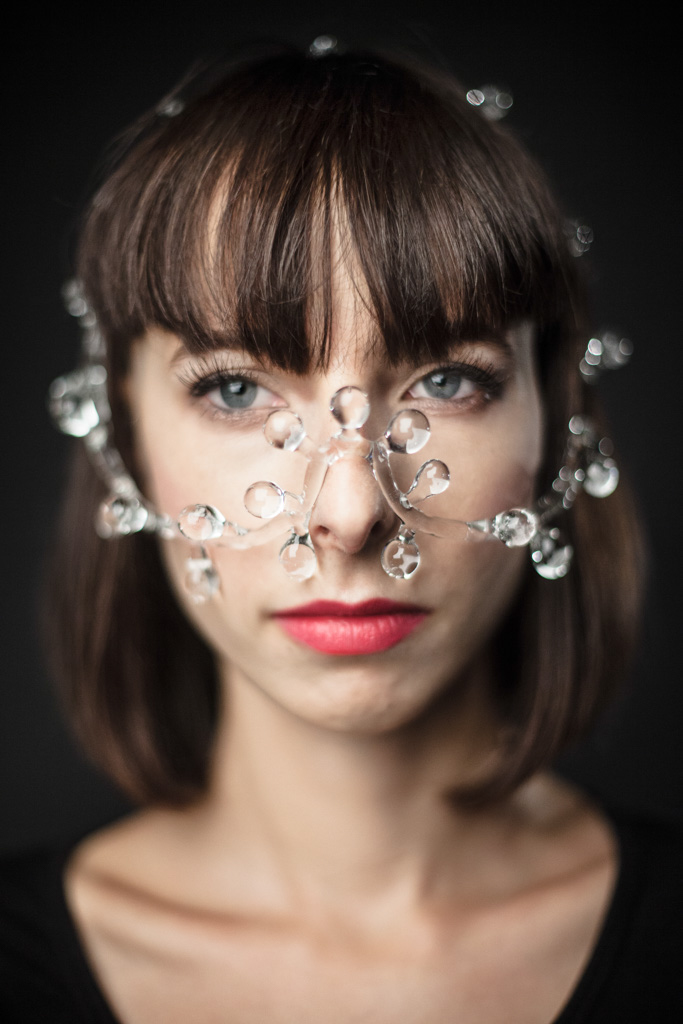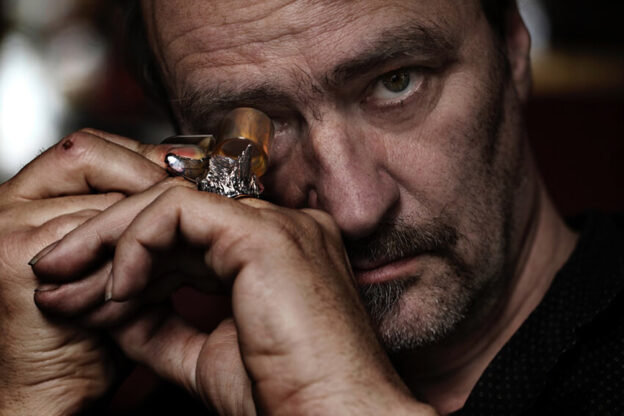Lauralee Hutson & Contemporary Enamelling Using Ancient Techniques

Contemporary Enamelling Using Ancient Techniques
Written by: Lauralee Hutson, USA
Enameling, fusing glass to metal, has endless possibilities for jewelers and sculptors alike and can provide a lifetime of challenge to the artist using this very old art form keeping it fresh and always rewarding. It has a long and illustrious history within cultures over the millennia and across the globe.
The earliest known use dates to the 13 th century BCE. The terminology used by enamellists to describe techniques is French but the art form became high art in Europe, China, Japan, Korea and India. It arrived late to the USA becoming increasingly popular during the 20 th century. Still, it is a small band of international artists who employ enameling in their work. This may be due in part to the time it takes to create and time then becomes money making enamel jewelry expensive jewelry and with very valid reasons. The processes are arduous, demanding and exacting but the results are magnificent. Today’s artist have decals and stencils that can be used to lessen time spent, should they wish to decrease the time investment but even with the use of decals time can be spent creating unique imagery with signature statements. I, for one love the results, love the challenges it presents me, love that it is always a medium in which I can find new horizons to explore. I never get bored with it.
Simply described enameling is fine particles of colored glass fused to a metal surface at intense temperatures, 750-850 C and 1380-1530 F. This description is where the use of the word simple ends when describing enamel processes.
I work in Cloisonné, Champlevé, Limoges and occasionally Basse-taille. Others find the gray values of Grisaille interesting or the fully transparent process of Plique á-jour, where the metal backing is removed creating delicate, intricately fascinating works. Within these named processes are a myriad of techniques for applying the glass.
Enameling can be done using a torch or a front loading kiln. Enamels can be powdered, liquid, acrylic based, suspended in wax crayons and powdered enamel can be applied dry or wet. There are traditional tools that are used in these processes which include sable brushes, my preferred tool as I wet pack most of my powdered enamel. Powdered enamel can be opaque or transparent. Some are translucent. They may contain lead or be lead-free. If working with lead based enamel, always wear protective inhalation masks. When dry sifting unleaded enamels you should also wear the mask.
Enamels can be applied to flat, domed or fully dimensional metal forms. If using solder in the construction, a high temperature or eutechtic solder is required and safety must be taken to not over fire a piece. As you can see, there is variety in the processes and each has its own unique outcome. Because I had a background in painting, I have wanted to mimic that look through painting with glass, but unlike the finely handled Limoges paintings I wanted a more painterly effect and was not as interested in miniature works. While paint hues can be mixed together to fully integrate to create a new color, enamel’s properties do not permit that kind of blending. Enamel granules melt where they land so enamel relies on the human eye to color blend, optic blending. Granule size then becomes important to the enamellist.
If I mix red with white, for instance, no matter how small the granule size I will never get pink. I will get a speckled effect of red and white. The speckles diminish in size if the glass particle size is small but pink is never actually created. The eye’s distance from the speckled surface allows for whatever blending can be achieved but as enamel is generally meant to be viewed from a closer perspective, the limitation of speckled color remains an issue. How can an enamellist avoid this if mixing colors, which I do liberally?
I mix analogous colors, those right next to each other on the color wheel, so that there is not the big difference in color such as with red and white or black and white. I add gray or off white if I want to get a less intense value of the hue. I may have thirty colors mixed together to start with and as I apply and want to create shading, I also mix these combined colors on the piece as I apply. This begins to explain the time it takes to paint with colored glass. In addition, I paint with a 5-0 sable brush, one with very few hairs in it. I use a magnification visor on my eyes.
Now, some of this effect could be gotten with liquid or acrylic enamels and a brush but I want my color to go all the way through to the surface of the metal. I stone my pieces smooth and if that color did not go all the way through I would quickly stone away any surface color. For this reason my use of watercolor detailing is always the last thing I do, after stoning the surface smooth. Watercolor is fired for a very short time in the kiln and I am done at that point.
This is a quick overview of a process I use in Cloisonné and Champlevé. In another installment I will explain how I alter the Limoges process to meet my expectations of painterly imagery using enamels. Please ask questions for clarification, if you would like.
The imagery attached is showing the cloisonné process of adding opaque colors to already formed and attached cloisonné wires. This enameled face is finished in the last image, but the sculpture it will be mounted to is still in process. #test
Lauralee’s PreeApproved profile : https://preeapproved.com/members/lauraleehutsonartworks/photos/
Lauralee’s Facebook page : https://www.facebook.com/Jewelry-And-More-At-Hutson-Art-210773686020316/?modal=admin_todo_tour¬if_id=1549017252027345¬if_t=page_invite







Responses